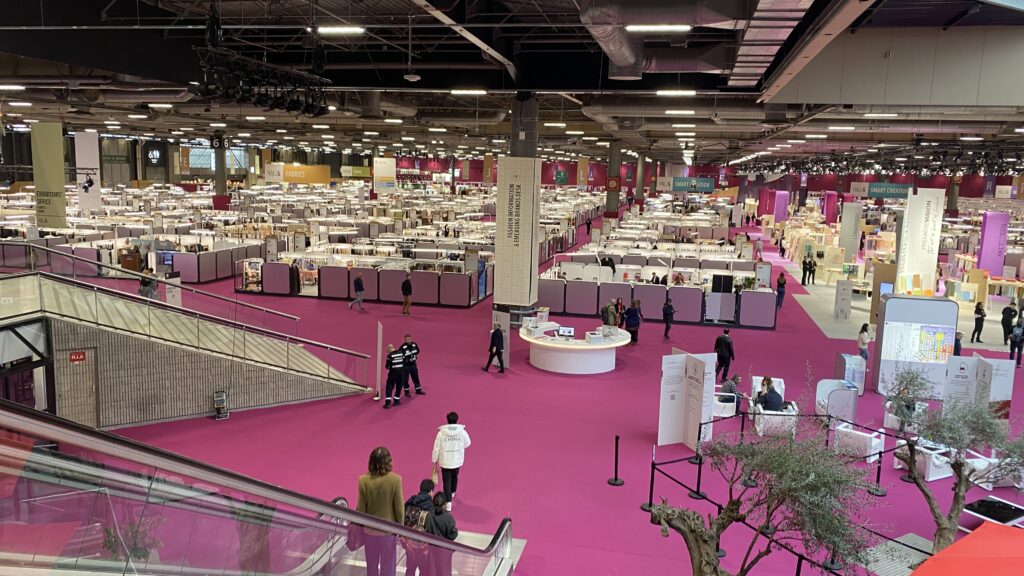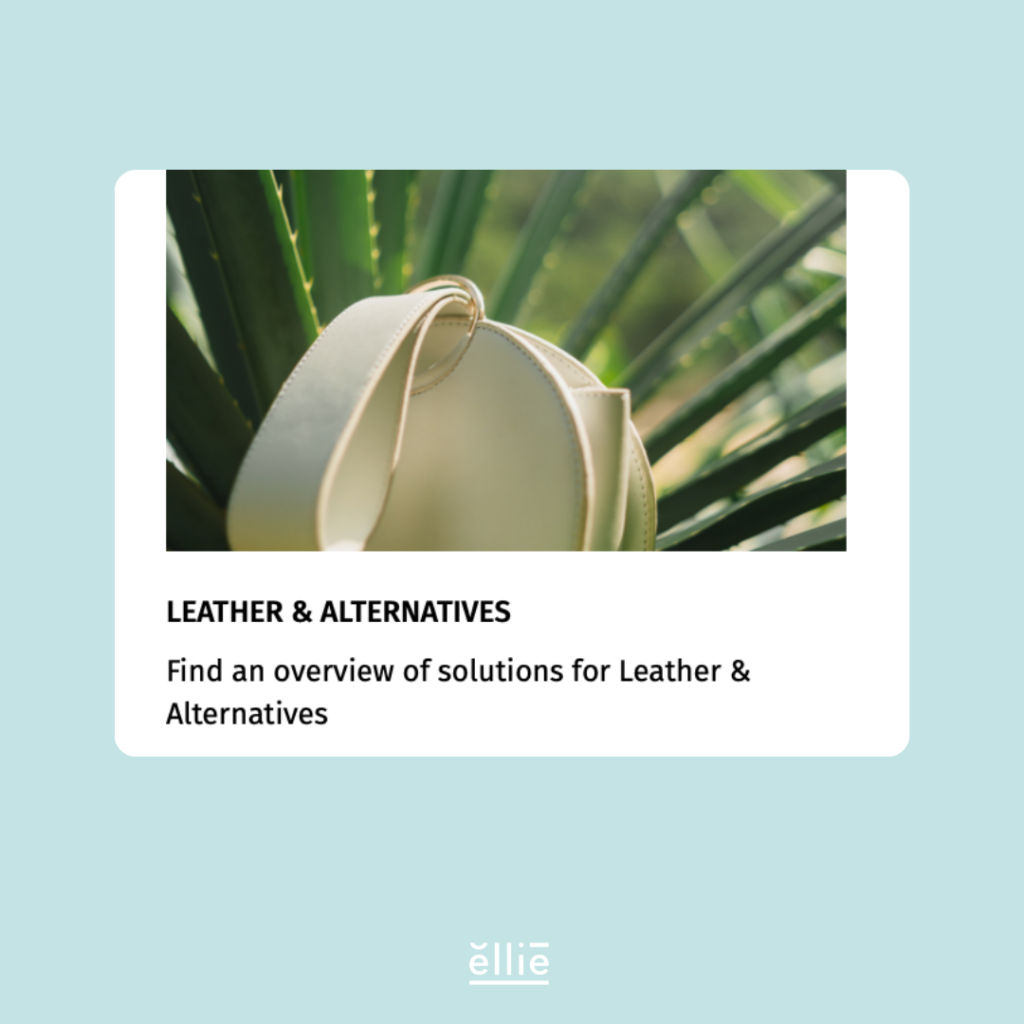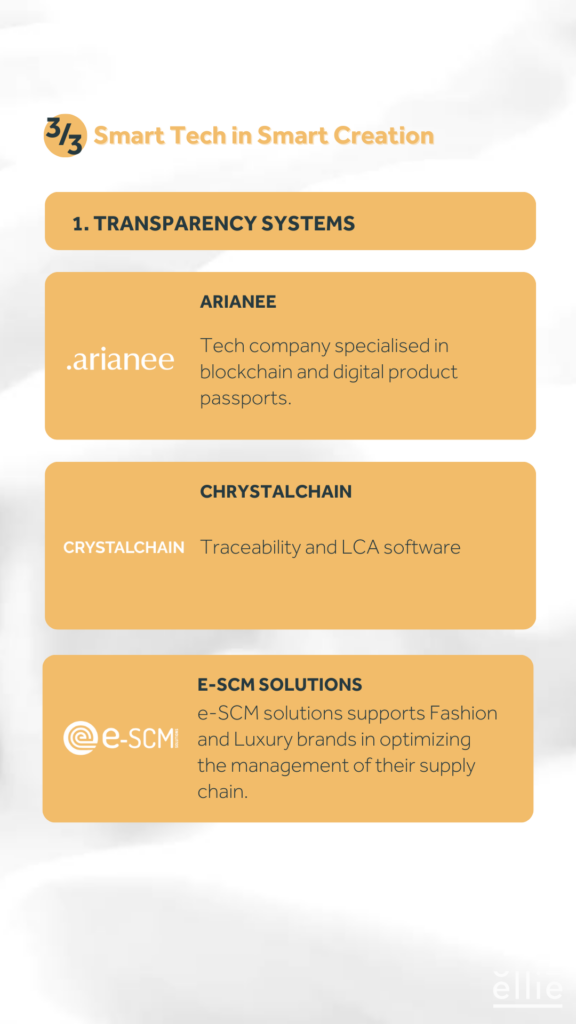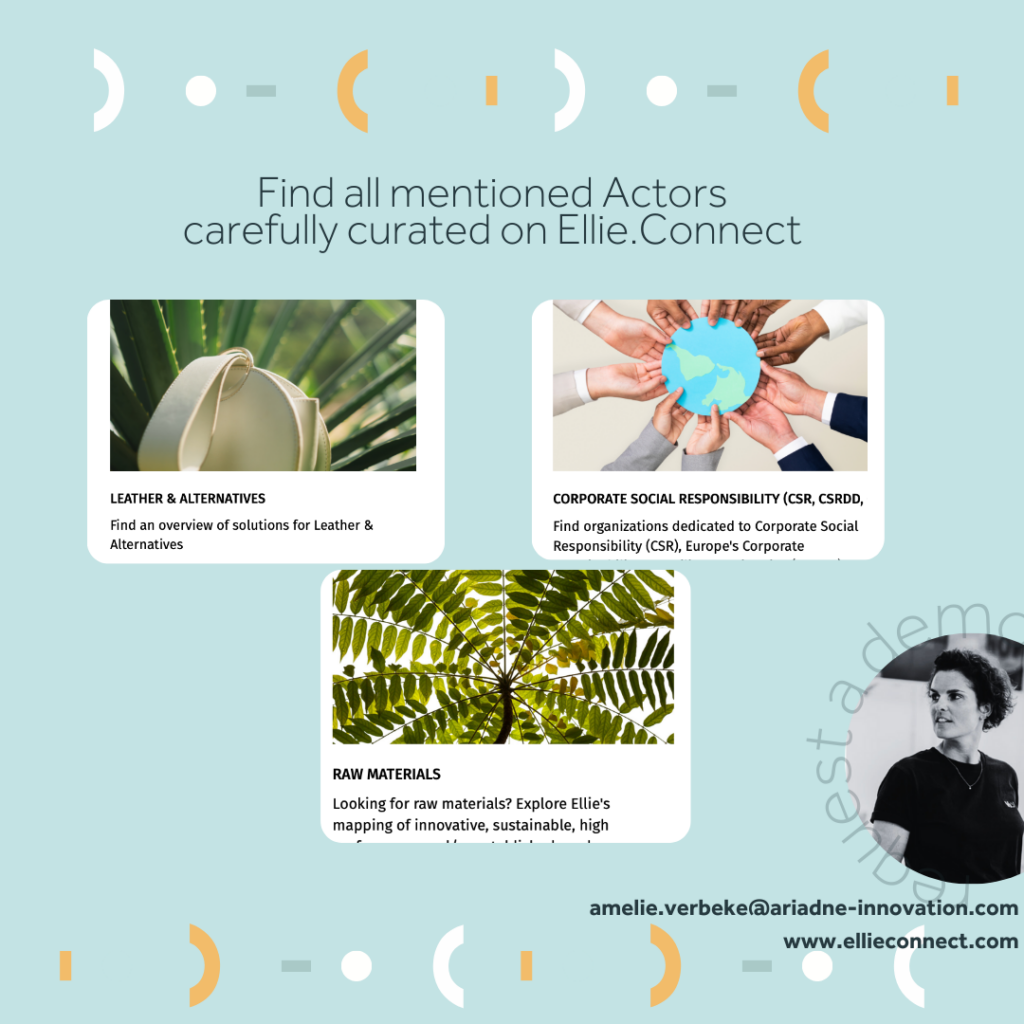We discovered the Spring Summer 2025 novelties in Paris and created a summary with Ellie’s Key findings for you.

Eco-Innovation Highlights
Let’s start with the highlights of the Eco-Innovation Seminar where the key word is undoubtedly transparency.
Social initiatives
All actors in the supply chain need to take action to provide safe and healthy work environments for every employee. Minimum wages must be guaranteed, and vacations provided.
Production site impact
Every actor must limit the environmental impact of the textile and fashion industry. This means that producers are going to have to improve their energy performance, and manage the chemical and water usage. The waste needs to be reduced and must be sorted, recovered and recycled.
Brands and producers are encouraged to source more locally grown materials as well as support local production. The pandemic and geopolitical problems have highlighted this too.

Key Materials Featured
Most featured materials on the fair & during the seminar:
- Mechanically recycled materials; cotton, viscose, …
- European cotton, or at least organic/ GOTS. Greece, Spain, and Portugal are cotton producing countries.
- Natural bast fibers: Linen (flax) and hemp took the crown of the most featured material for SS25. These materials require less water for cultivation than cotton and can also be produced in the northern regions of France, Belgium, and The Netherlands.
- Cellulosic solutions:
- Lyocell: e.g. Tencel by Lenzing. FSC certified wood is used to produce lyocell fibers. The chemicals are kept in an almost completely closed loop – Lenzing viscose has a 70% closed loop – during production.
- Seacell: Cellulosic fibers derived from seaweed.

- Textile to Textile recycling:
- Recycled cellulosic fibres: Eg.:Refibra by Lenzing, LIVA Reviva by Birla, Renewcell; who filed for bankruptcy recently, will ring a bell for most of you. Circulose was made by a chemical process separates (man-made) cellulosic fibers from synthetic fibers and creates a new cellulosic fiber.
- Recycled polyester: Tex2Tex is a recycled polyester fiber made in a low-impact way from polyester clothing. That way, no more bottles need to be used to create a recycled polyester yarn. Tex2Tex is available in staple as well as filament yarn.
- New synthetics: Polyester derived from plants (PLA). For example, Noosa is made from corn plants.

- Biotechnology:
- Brewed/fermented fibres:
- Spiber replicates the process of petrochemical fibers by brewing proteins and amino acids in a lab created environment. What takes millions of years in nature, is reached in years or months by Spiber. The fiber can be spun in 100% and exists in filament yarn.
- Lanzatech created a process that captures and converts steel mill emissions into Lanzanol (ethanol) through fermentation. It is then converted into a polyester yarn.
- Brewed/fermented fibres:
- Compostable synthetic fibers & yarns:
- The polymer Celys is 95% biodegradable into biomass, carbon dioxide and water by microorganisms and under industrial composting conditions.

- Vegan Leathers: to minimize animal cruelty and the usage of harsh chemicals, vegan leathers have earned their spot in the market.
- Most popular is the mushroom derived Mycel leather.The apple skin leather made by Frumat in 2009 and is used by Stella McCartney and Belgian sneaker brand Komrads.
- Indian company Banofi makes leather from banana plant waste.
******
Transparency
Not only materials, but legislation evolutions and supply chain transparency were key topics.

The Digital Product Passport is lurking just around the corner. By 2027 this will be mandated for all fashion and textile items. We’re here to applaud this evolution!
One of the consequences of this DPP will be ecodesign. Designers will be put to test to redesign fashion items that can be recycled a lot easier than the clothes existing today.
And finally there will be a law that prohibits the destruction of unsold goods. And that’s where Premiere Vision innovates with a completely new zone.
Solutions for Unsold Goods
In July 2023, PV did an experiment together with Nona Source. Manufacturers, brands, and designers showed massive interest into buying overstock fabrics. They lowered the threshold to discover the new Deadstock Zone by incorporating it in the exhibition hall.
Forty partners helped create a textile library of sleeping beauties for visitors, designers and creatives to browse through. The zone resulted in new network exploration and fits the mission of PV to accelerate the circular economy in the fashion industry.
The reason that there is so much deadstock is nuanced. There could be production mistakes, colour variations or damage during transportation. Brands sometimes order more fabric than needed to meet the producers MOQ or the fabric went out of style faster than estimated. Supply chain difficulties such as delays in production or shipping, custom clearance issues lead companies to search for other suppliers.
Solutions for deadstocks:
- Nona Source:
- They offer high-end materials from all the LVMH luxury maisons.
- l’Atelier Des Matières:
- A Maison Chanel initiative that offers 360° of circular solutions. In three words: recycle, recreate, reintroduce.
- Adapta:
- High quality leathers from luxury brands.


